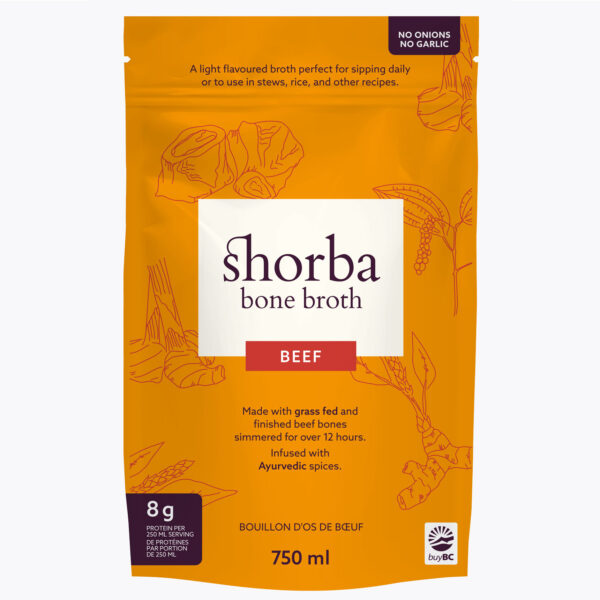Exactly How to Make Beef Bone Brew: A Step-by-Step Guide for Delicious Homemade Nutrition
Beef bone broth is a healthy addition to any kitchen. It offers countless wellness benefits and can enhance a range of recipes. The process starts with selecting the appropriate bones and active ingredients. Comprehending each action is important for attaining the very best flavor and splendor. Several home chefs overlook essential techniques that can boost their broth. What are these methods, and just how can they transform a basic broth into a culinary staple?
Recognizing the Benefits of Beef Bone Broth
While many individuals enjoy the rich taste of beef bone broth, they may not fully value its countless health and wellness benefits. This nourishing elixir is understood for its high collagen material, which supports joint wellness and promotes skin elasticity. The amino acids located in bone broth, such as glycine and proline, play significant duties in muscular tissue fixing and digestive system health and wellness. Furthermore, it is rich in minerals like magnesium, calcium, and phosphorus, necessary for preserving strong bones and overall health. Bone broth also possesses anti-inflammatory homes, which can relieve symptoms related to chronic problems. Eating it might support intestine health and wellness by improving the mucosal cellular lining of the gastrointestinal system, promoting far better nutrient absorption. Furthermore, the heat and convenience of a steaming dish of broth can provide a calming result, making it a tasty and nourishing option for people seeking both culinary pleasure and health advantages.
Picking the Right Bones
The structure of a delicious and nourishing beef bone brew hinges on the option of bones. For suitable outcomes, it is important to choose a variety of bones that supply a rich mix of flavor and nutrients. Marrow bones, which include the fatty, gelatinous marrow, are particularly prized for their capacity to improve the broth's richness. Joint bones, such as oxtails and knuckles, are likewise advantageous since they are high in collagen, adding to a silky appearance. Additionally, including some meaningful bones can include depth to the taste profile. Sourcing bones from grass-fed or pasture-raised livestock is recommended, as these alternatives tend to offer exceptional top quality and preference. It is also crucial to ascertain the bones are fresh and cost-free from any type of repulsive odors. By very carefully selecting the ideal bones, one can lay the groundwork for a scrumptious and beneficial beef bone broth.
Vital Active Ingredients for Flavorful Brew
To produce a flavorful beef bone broth, choosing quality beef bones is important as they serve as the foundation of the meal - Bone Broth Near Me. Aromatic vegetables and a mindful choice of natural herbs and seasonings better boost the broth's deepness and intricacy. Together, these vital ingredients add to a gratifying and abundant taste account
Quality Beef Bones
Quality beef bones work as the structure for a delicious and rich brew. The most effective alternatives consist of marrow bones, knuckle bones, and oxtails, each adding one-of-a-kind appearances and flavors. Marrow bones are prized for their jelly web content, which assists create a silky mouthfeel. Knuckle bones, rich in collagen, improve the broth's body and nutritional profile. Oxtails offer a passionate taste and added splendor. It is crucial to resource bones from grass-fed or pasture-raised livestock, as this improves the total top quality and flavor of the broth. Quality is also crucial; bones need to be utilized within a couple of days of purchase or iced up for later use. Choosing high-grade beef bones ensures a scrumptious and nourishing end product.
Fragrant Vegetables Choice
While choosing fragrant veggies, one need to take into consideration the function they play in boosting the general taste account of the beef bone broth. Typical options consist of onions, carrots, and celery, typically described as the "mirepoix." Onions add sweet taste and depth, while carrots add a subtle earthiness. Celery supplies a renewing crispness that balances the richness of the brew. Garlic, though optional, can introduce a robust flavor, complementing the mouthwatering notes of the beef. Leeks and shallots are also outstanding enhancements, providing one-of-a-kind taste measurements. For a tip of warmth and complexity, some might consist of ginger or fennel. Picking a mix of these aromatic vegetables ensures a versatile and delicious brew, setting the structure for a nourishing culinary experience.
Flavorful Herbs and Spices
Including flavorful natural herbs and flavors is crucial for boosting the taste of beef bone brew, as they introduce fragrant complexity and depth. Typical selections include bay leaves, which present a subtle organic note, and thyme, recognized for its natural taste. Rosemary, with its pine-like essence, adds a rejuvenating touch, while parsley adds illumination and freshness. For a tip of warmth, black peppercorns and garlic are superb additions, improving the broth's overall splendor. Additionally, pepper flakes or chili powder can introduce a gentle warmth for those that prefer a bit of spice. Selecting a well balanced combination of these components not just improves flavor however likewise instills the brew with valuable nutrients, making it a nourishing and tasty alternative for any type of meal.
Preparing the Bones and Veggies
To develop a flavorful and abundant beef bone broth, the preparation of veggies and bones is crucial. Choosing high-quality beef bones, such as marrow, oxtail, or knuckle, is vital, as they give the required collagen and nutrients. Toasting the bones in the stove enhances their taste, providing the brew a deeper, richer taste. It is suggested to roast them at 400 ° F for regarding 30 mins, till browned.Next, veggies play a pivotal duty in structure flavor. Common choices include onions, carrots, and celery, referred to as the mirepoix base. These need to be approximately sliced to make best use of flavor extraction throughout simmering. Garlic and tomatoes can likewise be included for added depth.Lastly, rinsing the veggies and bones under cool water aids remove any pollutants, making certain a clear broth. Properly preparing veggies and bones establishes the structure for a delicious and nourishing beef bone broth.
Food Preparation Methods: Stovetop vs. Slow Stove
The selection in between stovetop and sluggish cooker approaches offers distinct advantages when it comes to cooking beef bone brew. site web Stovetop cooking permits for quicker results and even more control over the simmering procedure, while sluggish stoves use convenience and a prolonged mixture of flavors. Each technique has its unique benefits, accommodating various choices and schedules.

Stovetop Cooking Conveniences
While both stovetop and sluggish stove methods have their values, stovetop food preparation offers unique advantages that can improve the procedure of making beef bone broth. One considerable benefit is the ability to manage the temperature level and simmering time much more specifically, which can result in ideal removal of nutrients and tastes from the bones. Furthermore, stovetop food preparation enables real-time adjustments, making it possible for the cook to check the brew's consistency and taste throughout the process. The quicker food preparation time compared to slow down cookers can also be useful for those requiring brew in a shorter duration. In addition, the stovetop approach motivates a hands-on method, fostering a much deeper link to the food preparation process and potentially leading to an extra delicious output.
Slow Cooker Advantages
Utilizing a sluggish cooker for making beef bone brew supplies a number of distinctive benefits that attract many home cooks. One key advantage is the benefit of set-it-and-forget-it food preparation. When the active ingredients are incorporated, the sluggish cooker can run ignored for hours, enabling a busy routine without consistent surveillance. Additionally, slow-moving stoves preserve a constant low temperature level, which removes tastes and nutrients effectively in time without the danger of steaming, bring about a richer brew. The power efficiency of slow stoves likewise sticks out, as they make use of much less power contrasted to stovetops (Beef Bone Broth). Slow cookers typically have programmable settings, making it possible for exact control over cooking times, which boosts the total ease of brew prep work.

Stressing and Saving Your Brew
Straining and saving beef bone brew is a necessary action that ensures a clear, flavorful final item. When the broth has simmered for the recommended time, it should be carefully poured with a fine mesh filter or cheesecloth into a large bowl or pot. This process gets rid of any solids, such as meat, vegetables, and bones, assuring a smooth consistency. To catch all taste, pressing the solids carefully with a spoon can be beneficial.After stressing, the broth should cool down to space temperature level before being kept. It is best to use airtight containers, such as glass jars or freezer-safe bags, to avoid fridge freezer burn and maintain freshness. Identifying the containers with the day is additionally a good idea. The brew can be cooled for up to a week or frozen for several months, making it a hassle-free addition to future meals. Appropriate storage space assurances that the dietary advantages and tastes stay intact.
Imaginative Ways to Utilize Beef Bone Broth
Beef bone broth provides a versatile structure for a selection of dishes, improving both flavor and nutrition. Home chefs can integrate it right into stews and soups, providing a rich base that grows the total taste. It can likewise be utilized as a food preparation fluid for grains, such as rice or quinoa, infusing them with included nutrients and flavor.Additionally, beef bone brew serves as an exceptional structure for sauces and gravies, offering intricacy and richness to dishes. For those seeking a healthy and balanced beverage, drinking warm broth can be relaxing and beneficial. It can also be utilized in smoothies for a healthy protein increase, though this might call for some creative flavor balancing.Ultimately, beef bone brew not only elevates everyday dishes yet also adds to a wholesome diet regimen, making it a staple component for health-conscious individuals and cooking fanatics alike.
Often Asked Questions
How Much Time Can I Shop Beef Bone Broth in the Refrigerator?
The inquiry of storage space duration for beef bone brew in the fridge is essential. Commonly, it can be safely stored this hyperlink for concerning 3 to 5 days, making certain quality and high quality before intake or cold for longer preservation.
Can I Freeze Beef Bone Broth, and for For how long?
Beef bone broth can be frozen effectively, enabling prolonged storage space. When correctly sealed in impermeable containers, it can last approximately 6 months in the freezer, maintaining its flavor and nutritional advantages for later usage.
Is It Safe to Utilize Bones From a Food Store?
The security of try here using grocery store bones depends upon their resource and handling. If properly sourced and kept, these bones can be safe for usage, supplying crucial nutrients when prepared correctly for broth.
Can I Make Beef Bone Brew in an Instantaneous Pot?
The Immediate Pot is certainly suitable for making beef bone brew - Beef Bone Broth. Its stress cooking feature substantially decreases cooking time while still drawing out abundant flavors and nutrients, making it a convenient choice for hectic home cooks

What Nutritional Distinctions Exist In Between Beef and Chicken Bone Brew?
The dietary distinctions in between beef and chicken bone brew mostly depend on their collagen web content, amino acids, and mineral profiles. Beef broth typically consists of more collagen and minerals, while chicken broth is typically lighter and easier to absorb. The structure of a savory and nutritious beef bone brew exists in the choice of bones. To develop a savory beef bone brew, choosing quality beef bones is essential as they offer as the foundation of the dish. The finest choices include marrow bones, knuckle bones, and oxtails, each contributing distinct textures and tastes. While selecting fragrant vegetables, one have to consider the function they play in improving the total flavor account of the beef bone broth. To develop a savory and rich beef bone broth, the prep work of bones and veggies is essential.